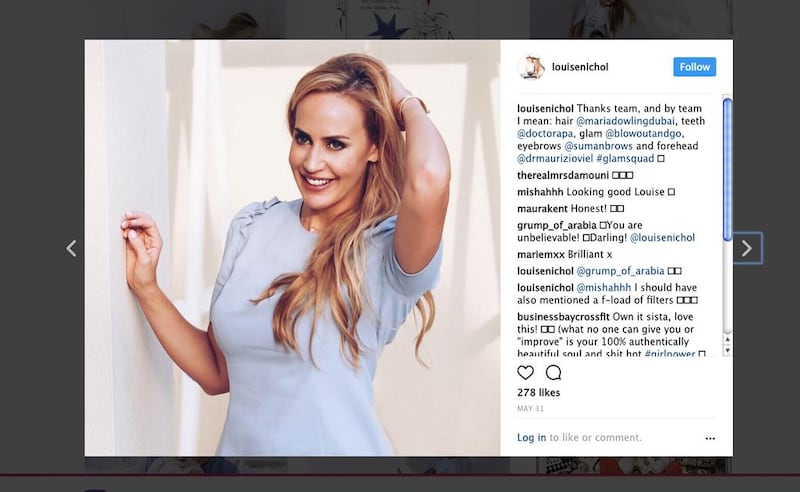Bailey Gaddis, who writes parenting blog Feng Shui Mommy, was browsing Instagram recently when she was struck by something: almost every image in her feed was a selfie and she was bored by all of them.
“I felt really disconnected from everyone,” says Gaddis, who lives in Los Angeles. “It just didn’t feel like real life.” The writer, who herself had just posted a selfie, decided to make some changes to the way she photographs her world.
While the selfie has become an enormously popular channel for self-expression and bragging rights – just ask anyone who’s ever been hit in the head with a selfie stick while standing in front of a major monument or minor celebrity – a backlash appears to be growing. People are getting sick of the selfie and many are pulling back their outstretched arms and returning to the humble, classic candid shot to populate social-media accounts.
If you need evidence of this emerging trend, look no further than influencer Louise Nichol, editor of Harper's Bazaar Arabia, whose Instagram account is full of beautiful candids depicting desirable moments – from playing in the pool with her children to posing with fashionistas such as Natalia Shustova, often smiling or slyly looking off-camera.
Perhaps the decline of the selfie should come as no surprise, given the results of several recent studies. One, published in the academic journal Frontiers in Psychology, found 82 per cent of respondents want to see fewer selfies on social media, often viewing them as phoney and self-promotional.
And according to a 2016 study by the University of Toronto, “external judges rated the targets as less attractive, less likeable, and more narcissistic in their selfies than in the photos taken by others.”
The narcissism element is clear. After all, it does take some nerve and an inflated opinion of your own importance to stand in front of Milan’s magnificent Duomo and then obscure most of it with a close-up of your own face.
“You really start to annoy people on social media because it really screams, ‘Hey, it’s all about me,’” says Julie Spira, an online etiquette and cyberdating expert in Los Angeles.
While concerns about being perceived as self-absorbed are one thing, there is another reason some are re-considering the selfie: Vanity.
“Selfies are a lot of fun to take in the moment, but they’re not your best photos,” says Spira. “You look better in the photos people take of you.”
It is worth considering weighing these two scenarios: Are you at your best while pouting in the bathroom mirror after setting your hair or in a picture taken by someone who loves you, perhaps after finishing a particularly satisfying bowl of pasta, with your face turned towards the setting sun?
Say hello, therefore, to the well-crafted candid – which is on its way to becoming the new selfie. Perhaps you are staring off into the distance in a contemplative manner. Maybe you are at a dinner party, listening intently to a very grown-up discussion. You might be at the park with a puppy tugging at one of your shoelaces, your head thrown back in laughter. Or high-fiving a small child. You get the idea.
The point is that the candid is viewed more favourably than the selfie – more spontaneous, less challenging, more modest and more of a window into one’s actual life.
“Authenticity is very in style,” says Spira. “With social media, the more genuine you can be, the better. People want to see what you really look like, something that’s representative of you in the world in your everyday life.”
Of course, as with so many things social media-related, abuse of the concept is inevitable. “Instagram husband” became a meme in 2015, showing how tiresome the practise could become for the designated candid-taker. Two years later, how many of those candids were carefully calculated by the subject and then taken by long-suffering family members or friends?
As for Gaddis, her digital footprint is now largely populated with candid images of life with her young family.
“I get a much bigger response from my readers and they really connect to those images way more than when I try to make everything look perfect,” says Gaddis. “Plus, the candids are more fun. They’re real moments in my life that I like to look back on.”
artslife@thenational.ae





